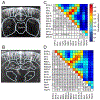From Light to Sound: Photoacoustic and Ultrasound Imaging in Fundamental Research of Alzheimer's Disease
- PMID: 33083711
- PMCID: PMC7571611
- DOI: 10.21926/obm.neurobiol.2002056
From Light to Sound: Photoacoustic and Ultrasound Imaging in Fundamental Research of Alzheimer's Disease
Abstract
Alzheimer's disease (AD) causes severe cognitive dysfunction and has long been studied for the underlining physiological and pathological mechanisms. Several biomedical imaging modalities have been applied, including MRI, PET, and high-resolution optical microscopy, for research purposes. However, there is still a strong need for imaging tools that can provide high spatiotemporal resolutions with relatively deep penetration to enhance our understanding of AD pathology and monitor treatment progress in fundamental research. Photoacoustic (PA) imaging and ultrasound (US) imaging can potentially address these unmet needs in AD research. PA imaging provides functional information with endogenous and/or exogenous contrast, while US imaging provides structural information. Recent studies have demonstrated the ability to monitor physiological parameters in small-animal brains with PA and US imaging as well as the feasibility of using US imaging as a therapeutic tool for AD. This concise review aims to introduce recent advances in AD research using PA and US imaging, provide the fundamentals, and discuss the potentials and challenges for future advances.
Keywords: Alzheimer’s disease; Photoacoustic imaging; brain imaging; ultrasound imaging.
Figures









Similar articles
-
Light on Alzheimer's disease: from basic insights to preclinical studies.Front Aging Neurosci. 2024 Mar 18;16:1363458. doi: 10.3389/fnagi.2024.1363458. eCollection 2024. Front Aging Neurosci. 2024. PMID: 38566826 Free PMC article. Review.
-
Dual photoacoustic/ultrasound technologies for preclinical research: current status and future trends.Phys Med Biol. 2025 Mar 19;70(7). doi: 10.1088/1361-6560/adb368. Phys Med Biol. 2025. PMID: 39914003 Review.
-
Elimination of Nontargeted Photoacoustic Signals for Combined Photoacoustic and Ultrasound Imaging.IEEE Trans Ultrason Ferroelectr Freq Control. 2021 May;68(5):1593-1604. doi: 10.1109/TUFFC.2020.3041634. Epub 2021 Apr 26. IEEE Trans Ultrason Ferroelectr Freq Control. 2021. PMID: 33259296
-
Photoacoustic elastography imaging: a review.J Biomed Opt. 2019 Apr;24(4):1-15. doi: 10.1117/1.JBO.24.4.040902. J Biomed Opt. 2019. PMID: 31041859 Free PMC article. Review.
-
Recent advances in photoacoustic contrast agents for in vivo imaging.Wiley Interdiscip Rev Nanomed Nanobiotechnol. 2020 Jul;12(4):e1618. doi: 10.1002/wnan.1618. Epub 2020 Feb 6. Wiley Interdiscip Rev Nanomed Nanobiotechnol. 2020. PMID: 32027784 Review.
Cited by
-
Chronic cranial window for photoacoustic imaging: a mini review.Vis Comput Ind Biomed Art. 2021 May 26;4(1):15. doi: 10.1186/s42492-021-00081-1. Vis Comput Ind Biomed Art. 2021. PMID: 34037873 Free PMC article. Review.
-
Photoacoustic and fluorescence dual-modality imaging of cerebral biomarkers in Alzheimer's disease rodent model.J Biomed Opt. 2024 Dec;29(12):126002. doi: 10.1117/1.JBO.29.12.126002. Epub 2024 Dec 23. J Biomed Opt. 2024. PMID: 39717714 Free PMC article.
-
Recent ultrasound advancements for the manipulation of nanobiomaterials and nanoformulations for drug delivery.Ultrason Sonochem. 2021 Dec;80:105805. doi: 10.1016/j.ultsonch.2021.105805. Epub 2021 Oct 21. Ultrason Sonochem. 2021. PMID: 34706321 Free PMC article. Review.
-
Light on Alzheimer's disease: from basic insights to preclinical studies.Front Aging Neurosci. 2024 Mar 18;16:1363458. doi: 10.3389/fnagi.2024.1363458. eCollection 2024. Front Aging Neurosci. 2024. PMID: 38566826 Free PMC article. Review.
-
A Transparent Ultrasound Array for Real-Time Optical, Ultrasound, and Photoacoustic Imaging.BME Front. 2022 Jun 8;2022:9871098. doi: 10.34133/2022/9871098. eCollection 2022. BME Front. 2022. PMID: 37850172 Free PMC article.
References
-
- 2019 Alzheimer’s disease facts and figures. Alzheimer’s & Dementia. 2019. March 1;15(3):321–87.
-
- Selkoe DJ. Amyloid β protein precursor and the pathogenesis of Alzheimer’s disease. Cell. 1989. August 25;58(4):611–2. - PubMed
-
- pubmeddev, E BH and B. Neuropathological stageing of Alzheimer-related changes. - PubMed - NCBI [Internet] [cited 2020 Mar 2]. Available from: https://www.ncbi.nlm.nih.gov/pubmed/1759558
-
- About a peculiar disease of the cerebral cortex. By Alois Alzheimer, 1907. (Translated by L. Jarvik and H. Greenson) - PubMed - NCBI [Internet] [cited 2019 Sep 20]. Available from: https://www.ncbi.nlm.nih.gov/pubmed/3331112 - PubMed
-
- Alzheimer’s Disease: Genes, Proteins, and Therapy | Physiological Reviews [Internet]. [cited 2019 Sep 20]. Available from: https://www.physiology.org/doi/full/10.1152/physrev.2001.81.2.741?url_ve... - DOI - PubMed
Grants and funding
LinkOut - more resources
Full Text Sources
